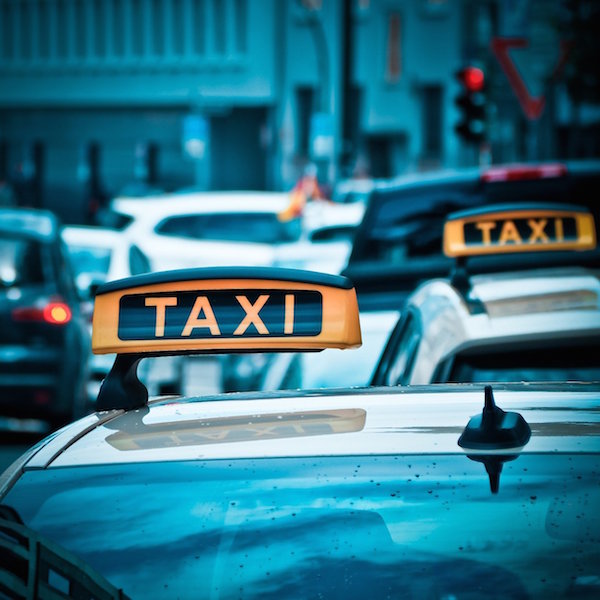According to the government’s statistical report for 2019, there were nearly 292,000 licensed taxis and private hire vehicles in England in 2019. That’s up 2.5% from the previous year and up 58% since 2005. Whilst it shows the industry is growing, this could also mean more competition for you. To help your business boom, we outline the top nine UK taxi industry trends that you need to watch in 2020.
1) Appeal to female passengers in 2020 to help your business succeed
According to the stats, women take more taxi trips than men. As women average 11 trips a year compared to 10 trips a year for men, it makes financial sense to take steps to appeal to this market.
 Women may feel more comfortable with female drivers. If you’re running a taxi business, recruit more female drivers.
Women may feel more comfortable with female drivers. If you’re running a taxi business, recruit more female drivers.- If you’re a woman thinking of starting a new career, this could be just the opportunity for you.
2) Target your taxi business towards people without a car to get more fares
Did you know that people without access to a car use a taxi around four times more often than people with a car? And these trips tend to be twice as far? To make the most of this stat, make sure you’re reaching out to people without a car.
- Advertise in shopping centres or supermarkets. People without a car often don’t want to carry heavy shopping home.
- Parents without a car may rely on a taxi to get their children to school. Target this market for a regular fare.
3) Minicabs are growing in popularity
The figures show that, with the exception of the East Midlands, the number of licensed taxis has decreased across England. However, the number of licensed private hire vehicles has increased.
Why get a minicab licence?
- It may be easier to get a licence as a private hire vehicle. That’s because taxis are highly regulated: fares and numbers are closely regulated by each local authority.
- Ride-hail apps like Uber have made it easier to get jobs as you’re driving so you can work more.
Benefits of getting a taxi licence
- Unlike a taxi, which can wait at a rank to pick up a fare, private hire vehicles (minicabs) must have a prior booking. If you want to be able to pick up fares direct from the street, you’ll need a taxi licence.
- With a taxi licence you can also take prior bookings, so you have a larger market.
- For example, you could get a booking for a drop at a station. With a taxi licence you could pick up another fare waiting at the station immediately. If you have a minicab, you can only pick up someone at the station with a prior booking.
 4) Don’t let competition for fares in your local area hit your bottom line
4) Don’t let competition for fares in your local area hit your bottom line
If you’ve been operating in Lewes for the last few years, you may be in for a shock. Last year saw a whopping 91.6% increase in the number of taxis and minicabs in this licensing authority. By contrast, the number of licensed cabs in Rossendale fell 50%, so if you operate in this area this could be an opportunity for your business to grow.
5) Is making your vehicle wheelchair accessible a smart move for 2020?
Adults with mobility difficulties use taxis more than people who do not, and they are using taxis more than ever. In 2010, adults with mobility difficulties took a taxi for an average of 16 trips a year. In 2019 this had increased to an average of 21 trips a year.
- If you operate in Devon, you could be in big demand if your vehicle is accessible for wheelchairs. That’s because less than 5% of licensed vehicles in The South Hams, Teignbridge, and East Devon authorities are wheelchair accessible.
6) Join the shift towards going self-employed
The number of taxi drivers who work for themselves is on the up. 83% are self-employed, so if you’re thinking of becoming your own boss you’ll be in good company.
Remember, if you work for yourself you’ll be responsible for essential paperwork including:
- Tax. Find out more about self-assessment at www.gov.uk.
- Insurance. Buying the right taxi insurance at a value for money price is essential to the success of your business.
7) Baby boomers finding a new vocation
The statistics show the numbers of drivers in the 60+ years bracket is increasing and now stands at 19%. It seems that retirees are not yet ready to stop work altogether and becoming a driver is a job that can suit their lifestyle.
 8) It’s all about the app if you want your taxi business to succeed
8) It’s all about the app if you want your taxi business to succeed
Ride-hailing app Uber has changed the face of driving a private hire vehicle. But it’s not the only app to think about being on. Other apps to consider include:
- Bolt.
- ViaVan.
- Gett.
- Addison Lee.
9) Go electric
Taxi drivers can get in on the national trend to go green with an electric vehicle. As more cities take the plunge to impose additional charges (or even ban) diesels, going electric makes sense to maximise profits on city centre fares.
Reasons to go electric:
- Customers want it. As people look to reduce their carbon footprint, they are opting for greener ways to travel.
- It can save you money. Electric vehicles are currently exempt from road tax and charges like the London Congestion Charge.
 Bear in mind:
Bear in mind:
- Buying or leasing an electric vehicle may cost more initially.
- The range can be limited. If your trade is mostly short journeys, you should find the range works. If you do long distance airport shuttle work, you may find the range of the vehicle is not sufficient to be viable. Opting for a hybrid could be a solution.
Finally
The taxi industry continues to grow, proving it’s a business worth being in. But with the influx of new competition, you’ll also face challenges. You need to keep a close eye on the trends we’ve listed above to make sure your taxi business is a success.
For more tips on helping your taxi business to be the best it can be, take a look at our blog.

